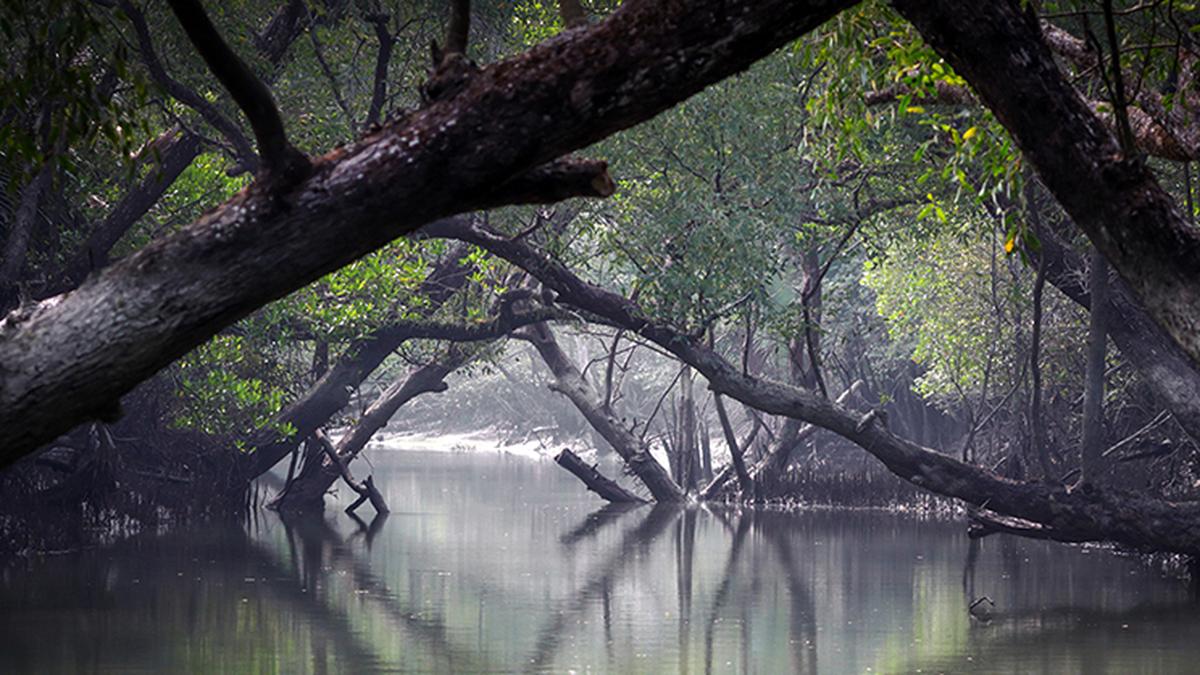
Coastal flooding harms different tree species differently: study Premium
The Hindu
New study by Drexel University researchers challenges the impact of rising sea levels on coastal tree species.
Global warming is raising sea levels and making flooding more common in some areas. Researchers have held both these effects among others responsible for discouraging the growth of plants of many tree species in coastal areas. But a new study by researchers at Drexel University in Philadelphia and the Northern University of Arizona has called for a pause in this thinking.
The study paper, published in the journal Frontiers in Forests and Global Change on August 28, has reported that a rising sea and coastal flooding could actually enhance the resilience of some coastal tree species while being detrimental to others.
How well trees grow in a place depends on the place’s ambient temperature, average rainfall, soil health, access to water with the appropriate qualities, and the location of other vegetation nearby, among other factors. Trees can respond fairly quickly to these changes, too. For example, even as sea levels are rising by a few millimetres a year, many species of coastal trees have started to move further inland, where the tides are lower and the salinity more tolerable — but also where other conditions may be more inhospitable.
The study’s authors LeeAnn Haaf and Salli F. Dymond previously studied coastal forests in the Delaware Bay in the U.S. state of Delaware and the Barnegat Bay in New Jersey. In a paper published in 2021, they reported that different plant species here responded differently when exposed to rising seas and repeated coastal flooding.
“In our recent study, we found species- and site-specific patterns related to sea level rise, temperature, and precipitation pattern (associated to tree growth) and that also extends to how those factors change with climate change,” Haaf, an environmental scientist at Drexel University, said.
One species in particular, the American holly (Ilex opaca), responded to more water in its surroundings by increasing the rate at which it grew — while loblolly pine (Pinus taeda) and pitch pine (Pinus rigida) trees suffered under higher water levels.
In the new study, Haaf and Dymond used a method called dendrochronology to understand how trees grew in response to specific conditions. In dendrochronology, scientists estimate when a tree formed a particular tree ring, and based on that develop a time-wise correlation between a climatic condition and the tree’s response.

Describing the Special Intensive Revision (SIR) drive under way in Bihar as “an invasive reconstruction of the electoral roll,” Dipankar Bhattacharya, general secretary of the Communist Party of India (Marxist-Leninist) Liberation, said States including Kerala should be on guard as it could be applied in other parts of the country as well.





















 Run 3 Space | Play Space Running Game
Run 3 Space | Play Space Running Game Traffic Jam 3D | Online Racing Game
Traffic Jam 3D | Online Racing Game Duck Hunt | Play Old Classic Game
Duck Hunt | Play Old Classic Game










